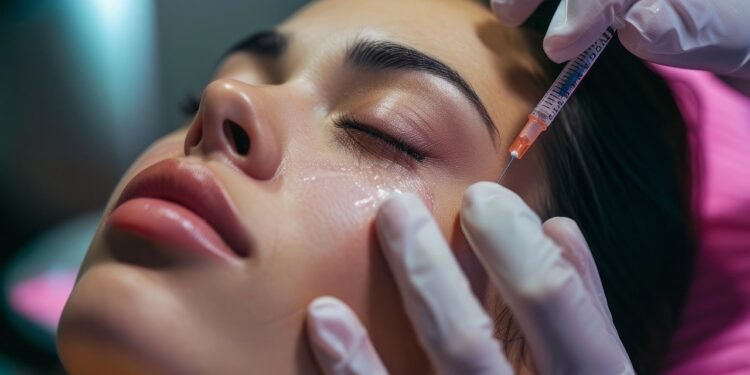Cosmetic procedures are becoming more popular as people look for ways to enhance their appearance. Whether it’s to smooth out wrinkles, reduce body fat, or reshape facial features, cosmetic procedures offer a range of options for those looking to improve their look. However, before deciding on any treatment, it’s important to understand the different procedures available, their potential risks, and the results you can expect.
This article will guide you through some of the most common cosmetic procedures and what you need to know about each one. From Botox to liposuction, we’ll cover the basics and provide important considerations to remember before making your choice.
Botox
Botox is one of the most well-known cosmetic procedures and is widely used to reduce the appearance of fine lines and wrinkles. Botox works by temporarily relaxing the facial muscles, which helps smooth out wrinkles, particularly around the eyes and forehead.
A popular trend these days is Barbie Botox, which involves injecting Botox into the trapezius muscles in the shoulders and neck area to create the appearance of a longer neck and slimmer shoulders, mimicking the look of a Barbie doll. While the idea of achieving a more sculpted neck and shoulders may sound appealing, many experts advise against this procedure. Injecting Botox into the trapezius muscles can lead to muscle weakness and other problems with posture and neck function. It also promotes an unrealistic beauty standard that can be damaging to self-esteem. Experts recommend considering less risky treatments that focus on more traditional areas, like the face, if you’re interested in Botox.
Dermal Fillers
Dermal fillers are another popular cosmetic procedure that adds volume to facial areas. Common treatment areas include the cheeks, lips, and under-eye hollows. Fillers can also smooth out deeper lines and wrinkles, giving the face a more youthful and refreshed appearance. Unlike Botox, which works by relaxing muscles, fillers add volume by injecting substances like hyaluronic acid beneath the skin. This can plump up areas that have lost volume due to aging or create fuller lips or cheeks for a more sculpted look.
Liposuction
Liposuction is a surgical procedure designed to remove fat from specific body areas. It’s commonly used to target areas where fat is difficult to lose through diet and exercise, such as the stomach, thighs, and hips. Fat cells are suctioned out during the procedure, resulting in a slimmer, more contoured appearance. Liposuction is not a weight-loss solution but a body-sculpting tool for people already at or near their ideal weight. After the procedure, it’s important to maintain a healthy lifestyle to keep the results.
Rhinoplasty
Rhinoplasty, or a nose job, is a surgical procedure to reshape the nose. This procedure can be performed for cosmetic reasons, such as changing the nose’s shape, size, or proportion to suit the face better. It can also be done for functional reasons, such as fixing breathing problems that are caused by a deviation in the septum. Rhinoplasty is a highly individualized procedure, and results can vary greatly depending on the patient’s goals and facial structure. Because the nose is such a prominent facial feature, even small changes can significantly affect appearance. Recovery from rhinoplasty can take several weeks, with most swelling subsiding after a month, although it may take up to a year for the final results to become fully visible.
Breast Augmentation
Breast augmentation is one of the most popular cosmetic surgeries, designed to enhance the size and shape of the breasts using implants or fat transfer. Many choose this procedure to increase breast volume, improve symmetry, or restore fullness lost after pregnancy or weight fluctuations. While it can deliver noticeable and satisfying results, it’s important to have realistic expectations and understand the potential risks, which may include infection, implant leakage, or changes in nipple sensation. Since implants may not last a lifetime, future procedures could be needed to maintain the desired outcome. For those considering this transformation, there are numerous reputable clinics offering Breast Augmentation Atlanta and other locations, providing expert guidance and professional care every step of the way.
Facelifts
A facelift, or rhytidectomy, is a surgical procedure designed to reduce visible signs of aging in the face and neck. It works by tightening loose skin, removing excess fat, and smoothing out deep wrinkles and folds. Many people choose facelifts to achieve a more youthful appearance and address sagging in areas like the cheeks, jawline, and neck.
Facelifts are considered one of the most effective procedures for reversing the signs of aging, but they are also one of the more invasive options. Recovery can take several weeks, and patients typically experience swelling and bruising in the days following surgery. The results of a facelift can last for many years, but it’s important to note that the procedure doesn’t stop the aging process.
CoolSculpting
CoolSculpting, a non-invasive procedure, targets and eliminates stubborn fat cells by freezing them. It’s ideal for people who want to reduce fat in areas like the abdomen, thighs, and arms without surgery. The procedure works by applying a cooling device to the skin, freeing and killing fat cells, which the body naturally eliminates over time. CoolSculpting is not a weight-loss solution but a body-contouring treatment for people close to their ideal weight who want to address localized fat deposits. The procedure has minimal downtime, with most people returning to regular activities immediately after the treatment.
While the results can take a few months to appear fully, CoolSculpting offers a convenient, non-surgical alternative to liposuction. However, managing expectations is important, as the results are more subtle than surgical fat reduction.
Cosmetic procedures offer various ways to enhance your appearance, from noninvasive treatments like Botox to surgical options like breast augmentation and facelifts. While the allure of these enhancements can be strong, it is essential to make an informed decision following careful consideration. Understanding the benefits of each procedure is crucial; for instance, noninvasive treatments typically require minimal downtime and allow for quick recovery, making them appealing to those with busy lifestyles. On the other hand, surgical options often yield longer-lasting results, but they come with more extensive recovery times and potential risks. In the end, the choice is yours.












